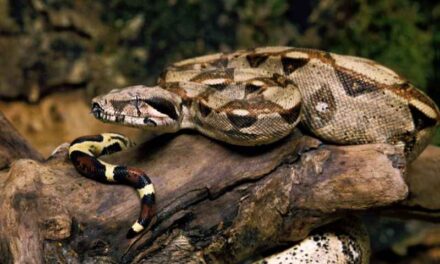Rattlesnakes are one of the most fascinating and feared creatures in the animal kingdom. Known for their distinctive rattle sound, these venomous reptiles inspire both curiosity and caution. However, there’s much more to these creatures than just their famous warning system. Below, we’ll explore ten mind-blowing facts about rattlesnakes that highlight just how unique and adaptable they are.
1. Rattlesnakes Have a Built-In Warning System
The most iconic feature of a rattlesnake is, of course, its rattle. Made from keratin—the same material that makes up human hair and nails—the rattle is composed of interlocking segments that create a buzzing sound when shaken. This serves as a warning to potential threats. Contrary to popular belief, a rattlesnake won’t always rattle before it strikes. However, when it does rattle, it’s a clear signal to back off!
2. They Can Control Their Venom
One of the more incredible things about rattlesnakes is their ability to control how much venom they inject when they bite. This is known as a “dry bite” when they bite without releasing venom. Rattlesnakes reserve their venom for hunting prey like small mammals, birds, and amphibians, and they can choose to conserve it when dealing with larger, non-prey animals, including humans.
3. They Have Heat-Sensing Pits
Rattlesnakes are equipped with a special adaptation: heat-sensing pits located between their eyes and nostrils. These pits allow them to detect warm-blooded animals, even in total darkness. This ability helps rattlesnakes locate prey and protect themselves from potential threats. These thermal receptors are so sensitive that rattlesnakes can sense temperature differences as small as 0.002 degrees Celsius.
4. Rattlesnakes Don’t Lay Eggs
Unlike many reptiles, rattlesnakes give birth to live young. This reproductive method is called ovoviviparity, where eggs develop inside the mother’s body and hatch just before birth. The young snakes are born fully developed and ready to fend for themselves. Rattlesnakes usually give birth to anywhere from 4 to 25 baby snakes, depending on the species.
5. They Shed Their Skin Multiple Times a Year
Like other reptiles, rattlesnakes shed their skin periodically throughout their lives. Each time they shed, they add a new segment to their rattle. While many people believe that counting the segments of a rattlesnake’s rattle will tell you its age, this is a myth. Rattlesnakes can shed their skin up to several times a year, and segments can also break off, making it impossible to determine their age by the rattle alone.
6. They Have Excellent Camouflage
Rattlesnakes have evolved incredible camouflage abilities, allowing them to blend seamlessly into their surroundings. Their colors and patterns vary depending on their habitat, helping them stay hidden from predators and sneak up on their prey. Whether they’re in deserts, forests, or grasslands, rattlesnakes use their environment to their advantage, making them stealthy hunters.
7. Rattlesnakes Can Live Without Food for Months
Rattlesnakes are cold-blooded, meaning they rely on external sources to regulate their body temperature. This also means their metabolism is slow, and they don’t need to eat as frequently as warm-blooded animals. Rattlesnakes can survive for months without food, living off stored energy. When they do eat, they typically consume animals that are 20-30% of their body weight, which helps sustain them during lean periods.
8. Their Fangs Fold When Not in Use
Rattlesnakes have long, hollow fangs that deliver venom to their prey, but what’s truly amazing is how they store them. When not in use, the fangs fold up against the roof of their mouth. This prevents the fangs from getting damaged or worn down while the snake is going about its daily activities. When a rattlesnake strikes, the fangs unfold, and venom is injected through grooves in the fangs, immobilizing its prey.
9. Some Species Can Swim
While it might be surprising, some rattlesnakes are capable swimmers. Species like the Eastern Diamondback rattlesnake are often found in coastal areas and can swim across rivers or even venture into the ocean. Their swimming ability helps them find new territory or escape predators. They move through the water using a serpentine motion, similar to how they move on land.
10. Rattlesnakes Play a Vital Role in the Ecosystem
Though often feared, rattlesnakes are crucial for maintaining a balanced ecosystem. As predators, they help control the population of small mammals like rats and mice. Without rattlesnakes, these rodent populations could grow out of control, which would negatively impact crops and other animals. By keeping these populations in check, rattlesnakes contribute to a healthier environment.
Conclusion
Rattlesnakes are more than just venomous reptiles with a scary rattle. They are complex, fascinating creatures with incredible adaptations that have allowed them to thrive in a wide range of environments. From their heat-sensing pits to their ability to control venom, rattlesnakes are master hunters and survivors. While they should be treated with caution, understanding their role in nature can help us appreciate these misunderstood creatures a bit more.
So, next time you hear that famous rattle, remember that it’s not just a sound of danger—it’s also a reminder of the amazing evolutionary traits that make rattlesnakes one of nature’s most incredible animals.





